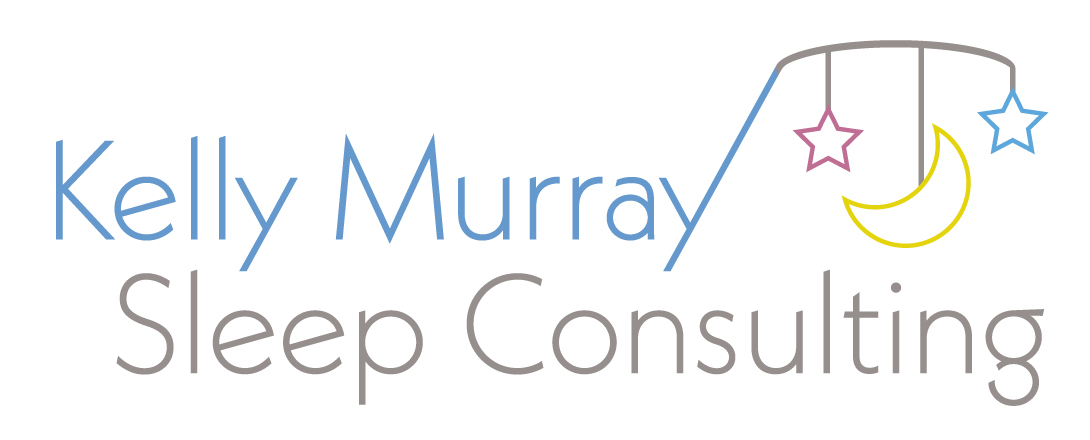Is Your Child Ready for the Transition from Two Naps to One?
By: Kelly Murray, Baby & Toddler Sleep Consultant and Creator of The Murray Method
Nap schedules are always a hot topic of discussion with our clients, but one transition stands out for its complexity: going from two naps to one.
Subscribe to my YouTube channel and never miss a vlog — learn all my tips on video!
Recognizing the Right Time for Change
This is a big transition! Your child is increasing their awake time substantially. If you make the move too soon, you run the risk of your child becoming extremely tired because they just can’t handle that amount of awake time.
When children become overtired, their sleep suffers significantly. They’re hit with a cortisol surge from the body working overtime to keep them awake, and this makes it harder for them to not only fall asleep, but stay asleep.
(Learn more about overtiredness and how it leads to sleep issues in children here: Why Overtiredness Leads to Sleep Issues.)
This is why it’s extremely important to first make sure that your child is ready for this two-naps-to-one transition.
SIGNS YOUR CHILD IS READY
Over 13 Months Old:
they’re taking longer than 20 minutes to fall asleep at naptime
they’re skipping their second nap entirely
nap duration is less than 1.25 hours
they’re waking up too early
If any of these criteria happen for more than a week, then it’s time to drop that nap. Just go ahead and do it! Your child is developmentally capable and they’re definitely showing signs that they’re ready for it.
Under 13 Months Old:
Observe the same signs but give it 2-3 weeks before deciding, as your child might be experiencing a developmental leap.
The Importance of Waiting for Developmental Leaps
When children go through developmental leaps, every day is a new day of celebration for them. It feels like Christmas morning, or a birthday, or another equally exciting special occasion — it’s just that it lasts for a few weeks instead of one day!
When children are going through these leaps, the desire to practice their new skill is stronger than their desire to sleep (also what we call sleep pressure). This is why we see children ditch their good sleep habits at some of the big milestones — like walking.
Around 10-12 months, the excitement (and lack of sleep) brought about by the developmental leap of walking gets confused for being ready to drop the second nap. This is why it’s so important to give your kiddo those 2-3 weeks of wait-time to see if they’re actually ready to drop the nap, or if they’re just eager to practice their amazing new skill.
If you try to drop the second nap too soon, your child will become overtired, and it will be compounded by sheer exhaustion once they start walking. This will only make things worse!
Do yourself a favor if your child is under 13 months and wait those 2-3 weeks to find out what’s at play. Then, you can proceed accordingly.
Okay, so you’ve established your child is definitely ready… now what?
A Step-by-Step Guide to Transitioning from Two Naps to One
The Key to Success: Make It Gradual
You don’t want to just jump to a one-nap schedule cold turkey because, again, your child will become extremely tired → which will lead to night wakings → which will lead to early morning wake-ups → which will ultimately sabotage the later naptime completely.
Here is what to do instead:
Days 1-3
Adjust the timing of both naps slightly
Day 1
Move first nap later by 30 minutes
(i.e. Nap 1: 10:00am ➝ 10:30am)Move second nap later by 30 minutes and offer it
(i.e. Nap 2: 3:00pm ➝ 3:30pm)Offer second nap only for 15-20 minutes
If your child is protesting and you reach about the 20-minute mark, it’s okay to call off the second nap — but be sure to do step 4.If the second nap didn’t happen, move bedtime earlier by about 60 minutes
(i.e. Bedtime 8:00pm ➝ 7:00pm)
Day 2 ➝ repeat Day 1
Day 3 ➝ repeat Day 1
Days 4-6
Further delay the first nap and keep the second nap brief
Day 4
Move first nap later again by 30 minutes
(i.e. Nap 1: 10:30am ➝ 11:00am)Keep second nap at the time it’s currently set for
(i.e. Nap 2: 3:30pm stays at 3:30pm)Offer second nap only for 15-20 minutes
If your child is protesting and you reach about the 20 minute mark, call off the second nap — but be sure to do step 4.If the second nap didn’t happen, move bedtime earlier by about 60 minutes
(i.e. Bedtime 8:00pm ➝ 7:00pm)
Day 5 ➝ repeat Day 4
Day 6 ➝ repeat Day 4
Days 7-9
Introduce a motion catnap in the afternoon instead of a second crib nap
Day 7
Move first nap later again by 30 minutes
(i.e. Nap 1: 11:00am ➝ 11:30am)Instead of offering second nap in the crib, take your child for a 15-30 minute motion catnap
Walk in the stroller, go on a car ride, or put them in the baby carrier for a brief nap and this will help take the edge off before bedtime.If the catnap didn’t happen, move bedtime earlier by about 60 minutes
(i.e. Bedtime 8:00pm ➝ 7:00pm)
Day 8 ➝ repeat Day 7
Day 9 ➝ repeat Day 7
Day 10
Establish the new one-nap schedule around midday, aiming for a nap 5.5 hours after morning wake-up
Day 10
Move first nap later again by 30 minutes
(i.e. Nap 1: 11:30am ➝ 12:00pm)
This is the ideal time for a one nap schedule — about 5½ hours after your child first wakes for the day. If the timing doesn’t line up, move the nap later by 30 minutes one more time after three days.
At this point, you can drop the second nap for good! Amen to that!
By Day 10, your child should be feeling comfortably adjusted to the nap changes. However, this does not mean that the nap will immediately become a 2-hour nap. If we can get at least a 1-1½ hour nap out of your kiddo, that is a success!
Monitoring and adjusting bedtime
Give it a good 8 weeks for your child’s body to fully adjust. It may take up to 8 weeks for your child to start taking those nice long 2-hour naps.
In the meantime, aim for your child to get 12 hours of sleep at night. This means bedtime should be about 12 hours after your child wakes for the day.
Patience Is Your Friend
Remember, this transition requires patience and understanding. Allow up to 8 weeks for complete adjustment. If challenges persist, reach out to us for help.
Once your child is fully adjusted, this is the best nap schedule ever.
If you need help sleep training your child so that they can make this nap transition, consider sleep training using my 5-star rated course: The Murray Method for Babies - Better Sleep in a Week.
All team members have completed in-person Sleep Sense Training and the Kelly Murray Sleep mentorship program. Kelly continues to support, guide and oversee the Sleep Squad as they work with the families who trust in us. That way, all clients will experience the same amazing results (and lots and lots of sleep) regardless of who supports them.
Sweet Dreams
Kelly Murray is a certified sleep coach and an award-winning pediatric sleep consultant based in Chicago offering sleep coaching services nationwide.












